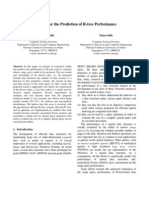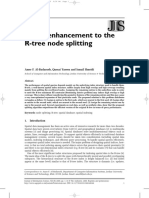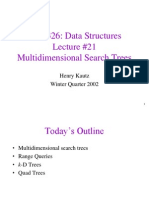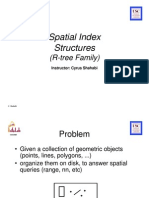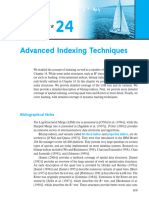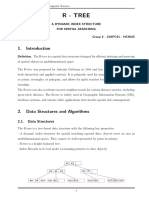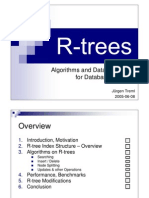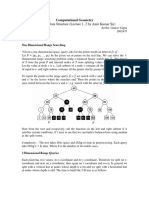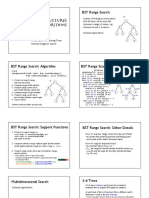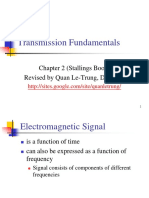0% found this document useful (0 votes)
118 views11 pagesR Tree
- R-trees are an indexing structure that extends B-trees to multiple dimensions, allowing efficient querying of multidimensional data.
- They were invented by Antonin Guttman in 1984 to organize points and rectangles in spatial databases.
- In an R-tree, data objects are grouped into minimum bounding rectangles which are then organized into a tree structure similar to a B-tree, enabling efficient range and k-nearest neighbor queries on the multidimensional data.
Uploaded by
ddroCopyright
© © All Rights Reserved
We take content rights seriously. If you suspect this is your content, claim it here.
Available Formats
Download as PDF, TXT or read online on Scribd
0% found this document useful (0 votes)
118 views11 pagesR Tree
- R-trees are an indexing structure that extends B-trees to multiple dimensions, allowing efficient querying of multidimensional data.
- They were invented by Antonin Guttman in 1984 to organize points and rectangles in spatial databases.
- In an R-tree, data objects are grouped into minimum bounding rectangles which are then organized into a tree structure similar to a B-tree, enabling efficient range and k-nearest neighbor queries on the multidimensional data.
Uploaded by
ddroCopyright
© © All Rights Reserved
We take content rights seriously. If you suspect this is your content, claim it here.
Available Formats
Download as PDF, TXT or read online on Scribd
/ 11




